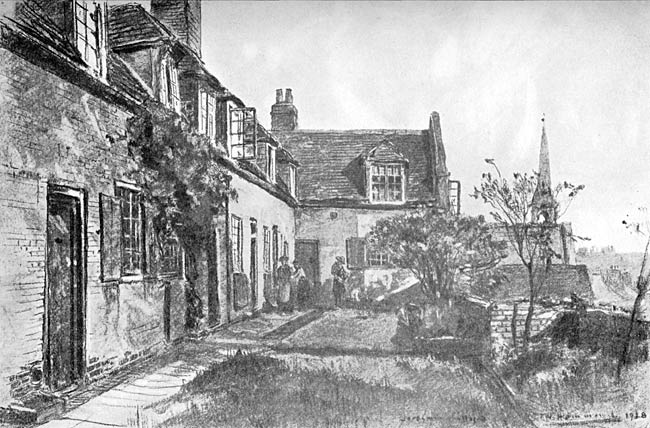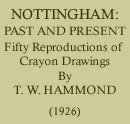< Previous | Contents | Next >
NOTTINGHAM PAST & PRESENT: STREETS AND YARDS
JESSAMINE COTTAGES, 1918

Jessamine Cottages—formerly called 'Old Workhouse Yard'—are situated upon Gilliflower or July Flower Hill near the end of Castle Gate and are very well seen from the Castle grounds; they are the most delightful little bit of urban picturesqueness imaginable, and have an interesting history.
Years ago, Nottingham was divided into the three parishes of St. Mary, St. Nicholas, and St. Peter, each with its own parish officers and workhouse; and Jessamine Cottages, erected in 1729, were the workhouse of St. Nicholas' Parish. They remained in. use until 1815, when the workhouse was moved to the bottom of Park Row, or 'Butt Dykes' as it was then called, which site is now occupied by the Chapel Bar Post Office. The old structure was then divided in tenements, and has since mellowed into the present beautiful oasis. If we carry our thoughts back to the period during which they were being used as a workhouse, and before they commenced their second phase of usefulness as happy homes, we may realize something of the great events of a hundred and fifty years ago : between 1729 and 1815 we have the Founding of the Methodist Connection, the Rebellion of 1745, with all the terror that the advent of the wild Highlanders to the neighbouring town of Derby, brought to Nottingham; we have the Declaration of American Independence, the horrors of the French Revolution and the Napoleonic Wars; Watts invented his steam engine, Hargreaves his spinning jenny and Arkwright his spinning machine. Finally, we have the Battle of Trafalgar, the Death of Nelson; and Wellington's victory at Waterloo which inaugurated modern conditions in Europe.
